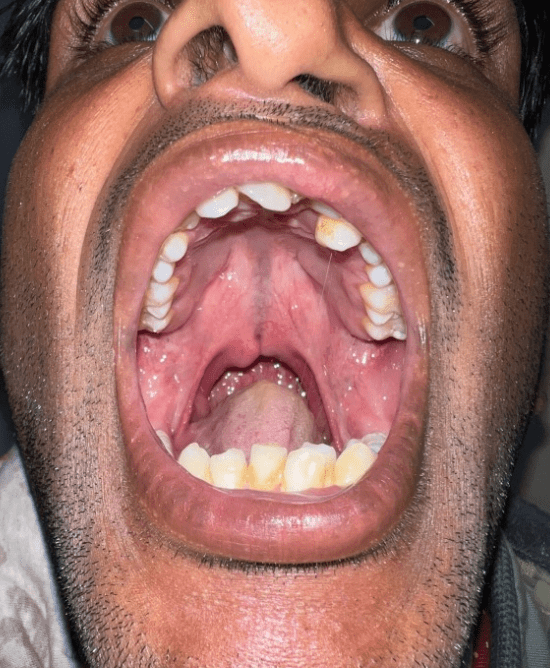This gene mutation causes Van der Woude syndrome, the most common single-gene cause of cleft lip and palate.
IRF6
The optimal age range recommended for primary cleft palate repair is this, before development of patterned speech habits.
9 to 12 months of age
The sling of this muscle must be reconstructed during palatoplasty to achieve optimal velopharyngeal competence.
Levator veli palatini muscle
Following speech evaluation, this imaging modality is the most appropriate initial tool to dynamically assess the mechanism of velopharyngeal closure.
Video nasal endoscopy (nasopharyngoscopy
This tooth is normally congenitally absent in CL/P.
permanent lateral incisors
This permanent tooth bud is most commonly affected and congenitally absent in patients with cleft lip and palate.
permanent lateral incisor
If primary palatoplasty is delayed past 18 months of age, this major functional outcome is most likely to be negatively affected.
Speech outcomes
This principle of surgical technique is the major goal when performing nerve or palate anastomosis.
A tension-free repair
This secondary speech procedure is indicated for VPI patients who display a sagittal closure pattern with satisfactory lateral pharyngeal wall motion.
Posterior Pharyngeal Flap (PPF)
This is an alternative to the iliac crest in ABG that causes severe prolonged edema.
Bone morphogenic protein 2
This middle ear condition affects more than 90% of patients with isolated cleft palate prior to repair due to associated Eustachian tube dysfunction.
Chronic middle ear effusion
Secondary alveolar bone grafting is typically timed during the mixed dentition phase, just before the full eruption or at the point of this dental event.
Crowning of the permanent canine (age 7-9y)
In soft palate clefts, the levator veli palatini and the tensor veli palatini demonstrate anomolous insertion in to this structure instead of the midline palatal aponeurosis.
posterior hard palate
A posterior pharyngeal flap is typically raised containing mucosa and this underlying muscle.
Superior pharyngeal constrictor muscle
Unoperated cleft patients present with this occlusion and maxilla.
class 3
hypoplasia
This pathognomonic physical finding distinguishes Van der Woude syndrome from isolated cleft palate.
Lower lip pits
Definitive septorhinoplasty in CLP is performed at what age range.
After facial growth AND orthognathic surgery top reposition maxilla -- Adolescent years (10-19y)
If a large defect is inadvertently created in the nasal lining flap during palatoplasty, this localized tissue flap provides a simple closure option with the least donor site morbidity.
Buccal fat pad flaps
This speech procedure has the highest incidence of OSA.
Sphincter Pharyngoplasty - 50-69% incidence OSA
Used for poor lateral pharyngeal wall motion; appropriate for coronal closure patterns.
VPI is a frequent complication following this orthognathic surgery in cleft patients.
Le Fort I osteotomy
The risk percentage for a man with an oral cleft to have a child with a cleft is approximately this.
4.7%
Males: >=18,
Females: around 16
Submucous cleft palate is defined by this classic triad.
bifid uvula, nothching of the posterior hard palate, zona pellucida (midline mucosal attenuation.

When performing a pharyngoplasty on patients with velocardiofacial syndrome, special attention must be paid to this/these anatomical structure(s) in order to avoid injury.
(medially displaced) internal carotid arteries
The L flap, utilized in the rotation-advancement technique for cleft lip repair, serves to provide this structural outcome
Lateral nasal vault/sidewall expansion